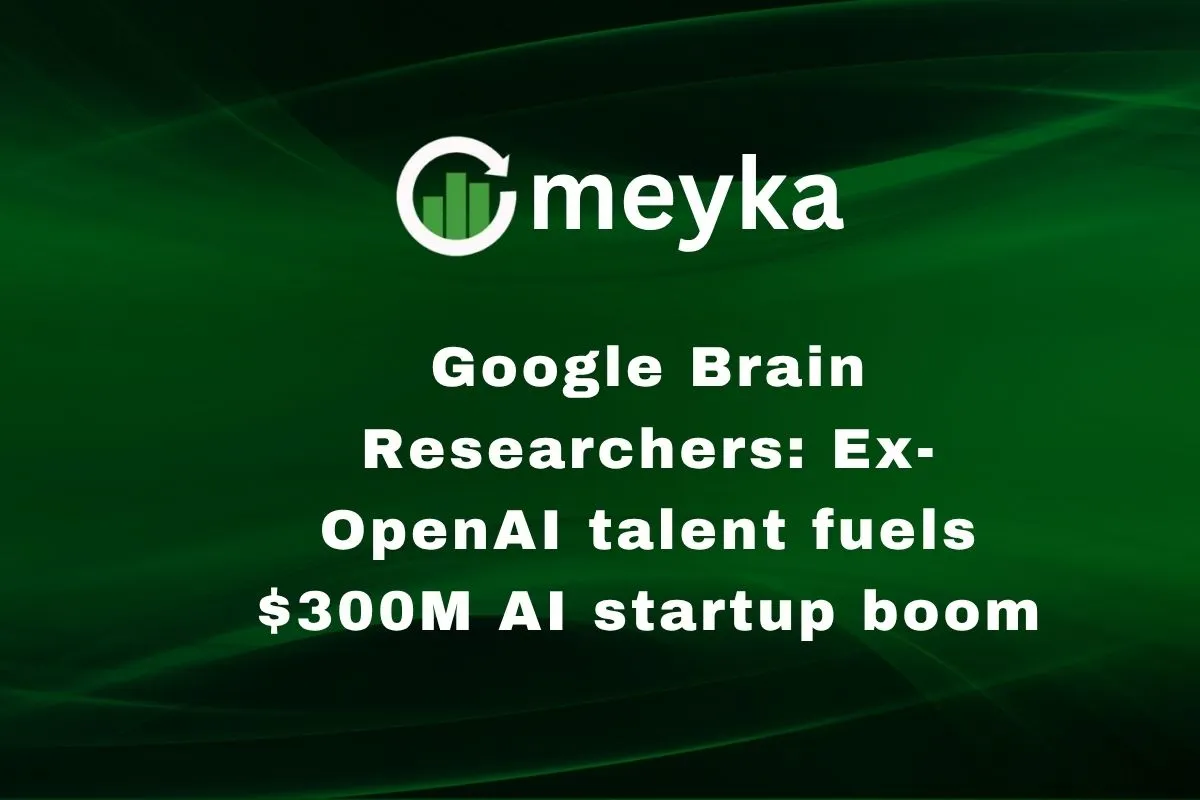Google Brain Researchers: Ex-OpenAI talent fuels $300M AI startup boom
The field of artificial intelligence is undergoing a dramatic shift right now. Researchers from top laboratories like Google Brain and DeepMind are leaving major companies to launch their own ventures. One startup has already raised an eye-popping $300 million seed round just days after its formation.
We are seeing a change in how AI innovation happens. These scientists and engineers are choosing bold missions and startup freedom over large-corporate structures. We’ll explore why this is happening, how it’s reshaping the AI world, and what it means for industry, investors and all of us.
The Talent Exodus: What’s Happening
In recent years, many top-tier AI researchers have left laboratories like Google Brain and DeepMind to start or join deep-tech startups. For example, a group of former DeepMind researchers launched a new company, citing frustrations with slow pace and large hierarchy.
One standout case is the startup Periodic Labs, founded by former researchers from OpenAI and DeepMind, which announced a huge seed round of around $300 million.
Why are they leaving? There are several reasons: more autonomy, the ability to pick mission-driven challenges (rather than feature-driven products), less red tape, and the chance to work at the frontier of science, not just incremental product improvements.
The Funding Boom: $300 M and Beyond
The seed round for Periodic Labs is unusually large for a startup at such an early stage, but it’s part of a wider trend of massive investment in AI startups founded by elite talent. In fact, former Googlers and ex-Big Tech AI researchers have already raised hundreds of millions of dollars for their independent ventures. Investors see teams with Big Tech research credentials as safer bets: they assume the talent is proven, they can attract more capital, and they might move faster than corporate labs.
This kind of funding surge creates a feedback loop: talent leaves to start new firms → large funding flows → more prestige for the startup path → even more departures.
Why Big Labs Should Care
For big research labs like Google Brain and DeepMind, this talent outflow is meaningful. When their researchers leave, they lose people who deeply understand the core science, who can lead breakthroughs. That slows innovation and may diminish competitive advantage.
Moreover, the shift signals that large labs may no longer have the same draw for certain kinds of researchers. The appeal now is not just salary or brand, but autonomy and mission. As such, companies may have to rethink how they retain and motivate top AI talent.
This trend also spreads power in the AI ecosystem: more innovation is happening outside the big labs, which means big firms are no longer the only key players in shaping the direction of AI.
What These Startups Are Aiming to Do
The new generation of startups isn’t just building chatbots or apps, they’re tackling deeper scientific challenges. For instance, Periodic Labs is combining AI with materials-science and robotics to build “AI scientists” and automated labs. These ventures aim to let AI propose hypotheses, design experiments, run physical tests, and analyze results, all with minimal human oversight. That kind of work goes beyond software into the physical world: new materials, energy solutions, and scientific discovery.
We’re talking about bridging the gap between what AI can do in code and what it can do in the lab. If successful, the implications are huge.
Risks and Challenges
Even with big vision and deep talent, there are serious challenges. First, research-to-product translation is hard. Many deep-science ventures require big time, big money, and complicated experiments. Second, high capital burn is a risk. Building robotic labs, materials pipelines, and science infrastructure takes resources. The startup environment is risky, and not all will succeed.
Third, despite the hype, there is uncertainty about how fast real breakthroughs will come. Big rounds don’t guarantee big results. Additionally, large labs may still have advantages in infrastructure, data, and scale.
Finally, as multiple labs and startups compete for talent, retention becomes a long-term issue even for startups.
What It Means for the Industry & Investors
For investors, this trend signals that bets are being placed on “teams with elite research credentials + bold science missions.” Those qualities attract premium valuations.
For large tech firms and corporate labs, the message is that retaining top researchers will require more than pay: mission clarity, autonomy, speed, and innovation culture now matter more.
For the broader AI industry, this shift may lead to more distributed innovation. We could see many more players making meaningful advances, not just the handful of giant labs. That could accelerate progress, but also lead to more fragmentation and competition for talent and resources.
Conclusion
The wave of top researchers from labs like Google Brain and DeepMind leaving to launch or join startups backed by hundreds of millions in funding marks a new phase in AI. We are witnessing a “startup spring” in AI and science, where talent, funding, and ambition converge in less-traditional environments. What happens next matters: will these startups deliver breakthrough products or materials? Will big labs adapt and retain their lead? Either way, we’re looking at the next chapter of AI innovation, and it’s not just inside the big tech labs anymore.
In the end, the movement of Google Brain researchers may reshape not just companies, but how science itself is done, faster, leaner, and more distributed than ever.
Disclaimer:
This content is for informational purposes only and is not financial advice. Always conduct your research.






